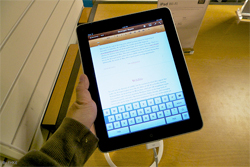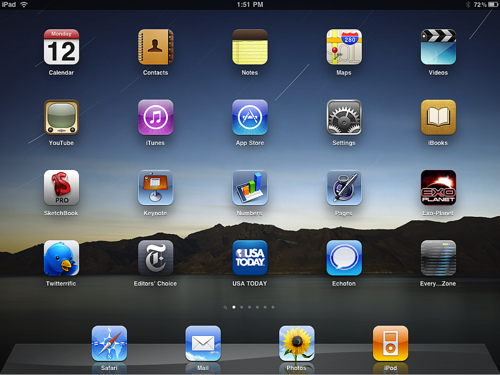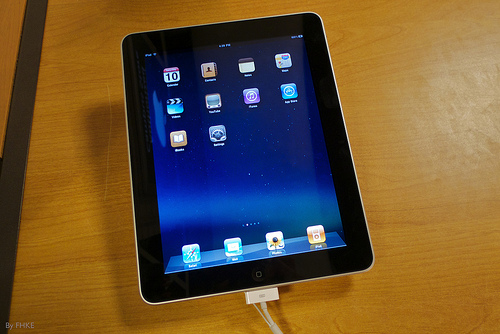Sorry, not sorry – this mostly involves letting them use their phones in class.
I am finding it increasingly so bizarre that phones are not utilised in education more often. And, yes, there is something to be said for having a bit of a digital detox, but phones are an inherent part of everyday life: why are we excluding them from this part?
As a headteacher, I am always looking for ways to do things differently. Innovation is vital to ensuring that we are always delivering the very highest standards of education, and giving students the tools they need to thrive and fulfil their potential. The digital world presents a whole host of new challenges for schools – challenges which require exactly this kind of different thinking and new ideas, if we are to address them successfully.
What separates the successful mobile learning projects from the unsuccessful? This is a ‘million dollar’ question, and I’ve thought long and hard about it. From the 17 large 1:1 projects I’ve worked on, only three have been truly successful in producing transformational learning. In your own experience, how many schools do you know who have transformed learning vs how many you know rely on iPads as laptop placements, focusing on web browsing and research functions only? I’m sure you’ll draw similar conclusions to my own, but if a handful of schools can transform learning with mobile devices, how do we replicate it across more schools? I believe I’ve found the answer.
What is the most important change you can make to your BYOD programme? For Principal Eric Sheninger, it was doing away with writing out a user name and password for every student who wanted to gain access to the network. Together with good policies and infrastructure, he argues, trust and respect for students is vital for a successful BYOD strategy.

My first ever post on the topic just provided a small glimpse at the possibilities inherent when students are empowered to use the technology that they already posses to enhance their learning experience.
It was our desire and quest to create a school culture and learning environments that were more reminiscent of the real world that our learners would soon be a part of that drove change in this area.
When I reflect upon how the program has evolved into it's current state I cannot help but to think about the most important change that was made recently.

Below you will find all of my iPad 100 posts covering everything you will need to know when investing in iPads for your school.
iPad in schools 101 – In the beginning http://buff.ly/TNmYa1
iPad in schools 102 – Why iPad? http://buff.ly/ZjYmuD
iPad in schools 103 – THE device http://buff.ly/TNnbdB
iPad in schools 104 – THE learning http://buff.ly/ZjYH0r
iPad in schools 105 – Workflow – How to save, work with multiple apps and share http://buff.ly/ZjYQkr
iPad in schools 106 – The importance of your infrastructure http://buff.ly/ZjYXwh
iPad in schools 107 – Why trialling is important http://buff.ly/TNnxRj
iPad in schools 108 – The importance of training & staff http://buff.ly/TNnF3o
iPad in schools 109 – Ways in which mirroring can take place http://buff.ly/TNnPYx
iPad in schools 110 – Stakeholders http://buff.ly/TNo31z
Photo credit: FHKE

Across the education landscape, student text messaging is a bone of contention among teachers. It’s not an issue in the lower grades because most K-5 schools successfully ban cell phones during school hours. Where it’s a problem is grades 6-12, when teachers realize it’s a losing battle to separate students from their phones for eight hours.
The overarching discussion among educators is texting’s utility in providing authentic experiences to students, the type that transfer learning from the classroom to real life. Today, I’ll focus on a piece of that: Does text messaging contribute to shortening student attention span or destroying their nascent writing ability
Let’s start with attention span. TV, music, over-busy daily schedules, and frenetic family life are likely causes of a student’s short attention span. To fault text messaging is like blaming the weather for sinking the Titanic. Texting has less to do with their inability to spit out a full sentence than their 1) need for quickness of communication, 2) love for secrecy, and 3) joy of knowing a language adults don’t.

Tablet computing and mobile devices promise to have a dramatic impact on education. A growing number of schools across the world are jumping on the digital bus and embracing iPads as the latest tool to teach literature in multimedia, history through games and simulations, and maths with step-by-step animation of problems.
In my school, we have been rotating one set of iPads this year and it gave me an opportunity to collect quite a few apps on a variety of subjects. Here's my favourites - all 107 of them:

Earlier last month, Apple’s CEO, Tim Cook, marked the launch of the new iPad by declaring that we live in a ‘post-PC world’. Regardless of whether you agree with Cook’s statement, it would be difficult to deny that ICT in schools has moved far beyond desktop computers.
Tablet PCs, MP3 players and even handheld gaming devices are being used increasingly in UK schools to deliver learning in engaging, inspiring and flexible ways. Although using mobile devices in the classroom can benefit both pupils and teachers, just like traditional teaching methods, mobile learning needs to be properly planned and managed.
Here are my five tips for managing mobile learning in the post-PC world:

A community-driven platform for showcasing the latest innovations and voices in schools
Pioneer House
North Road
Ellesmere Port
CH65 1AD
United Kingdom